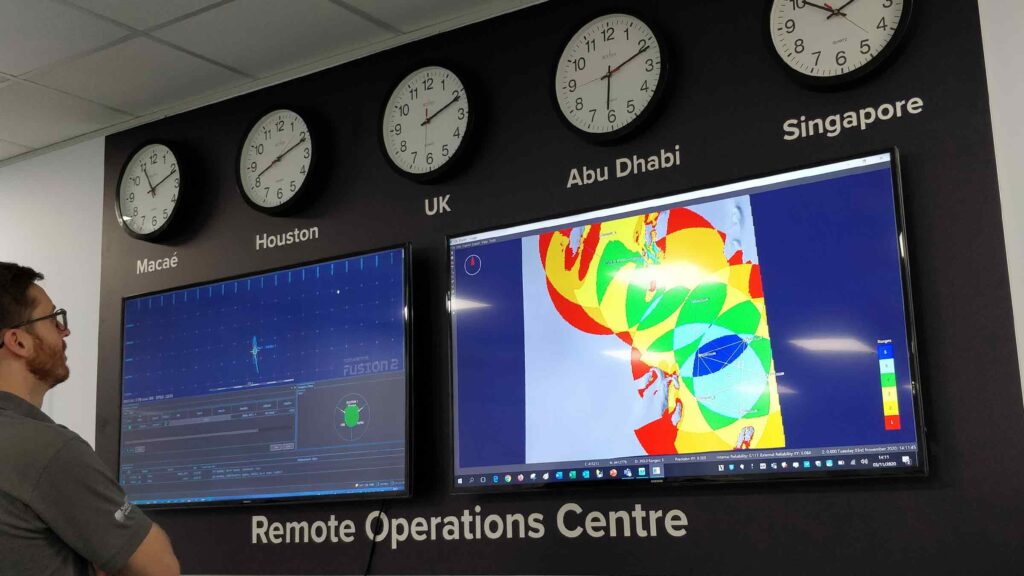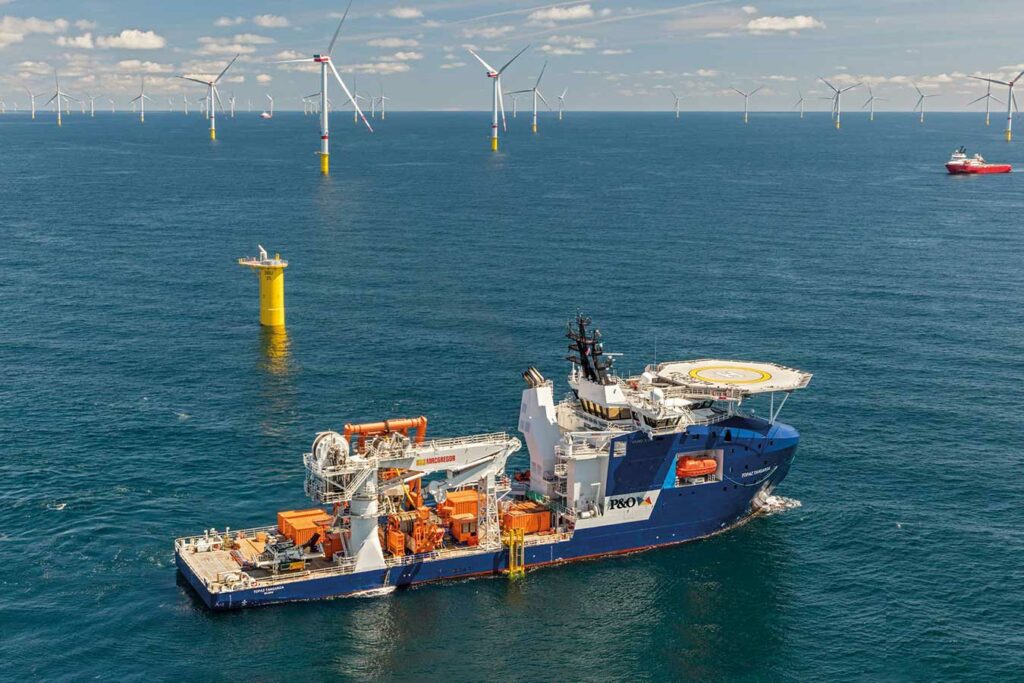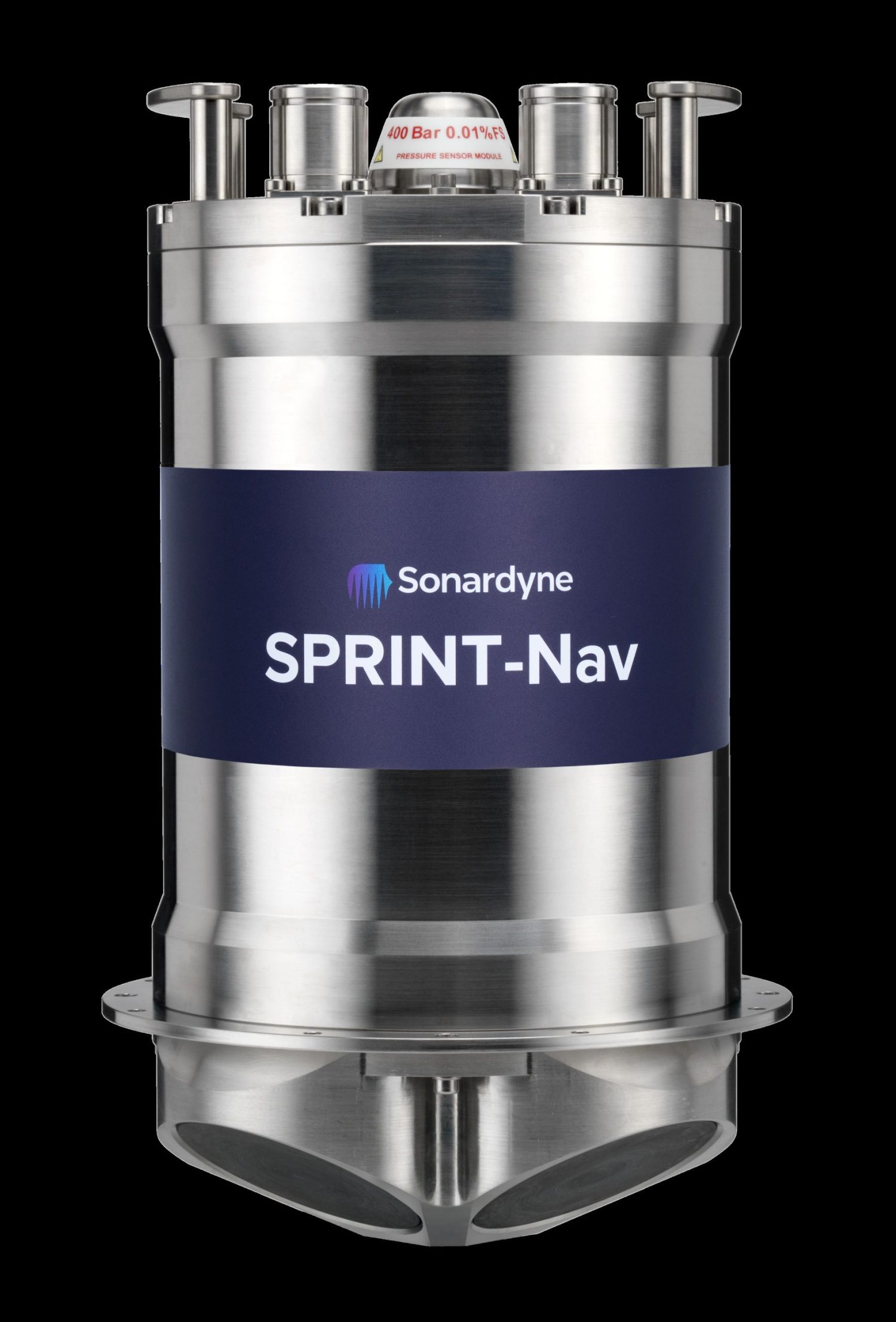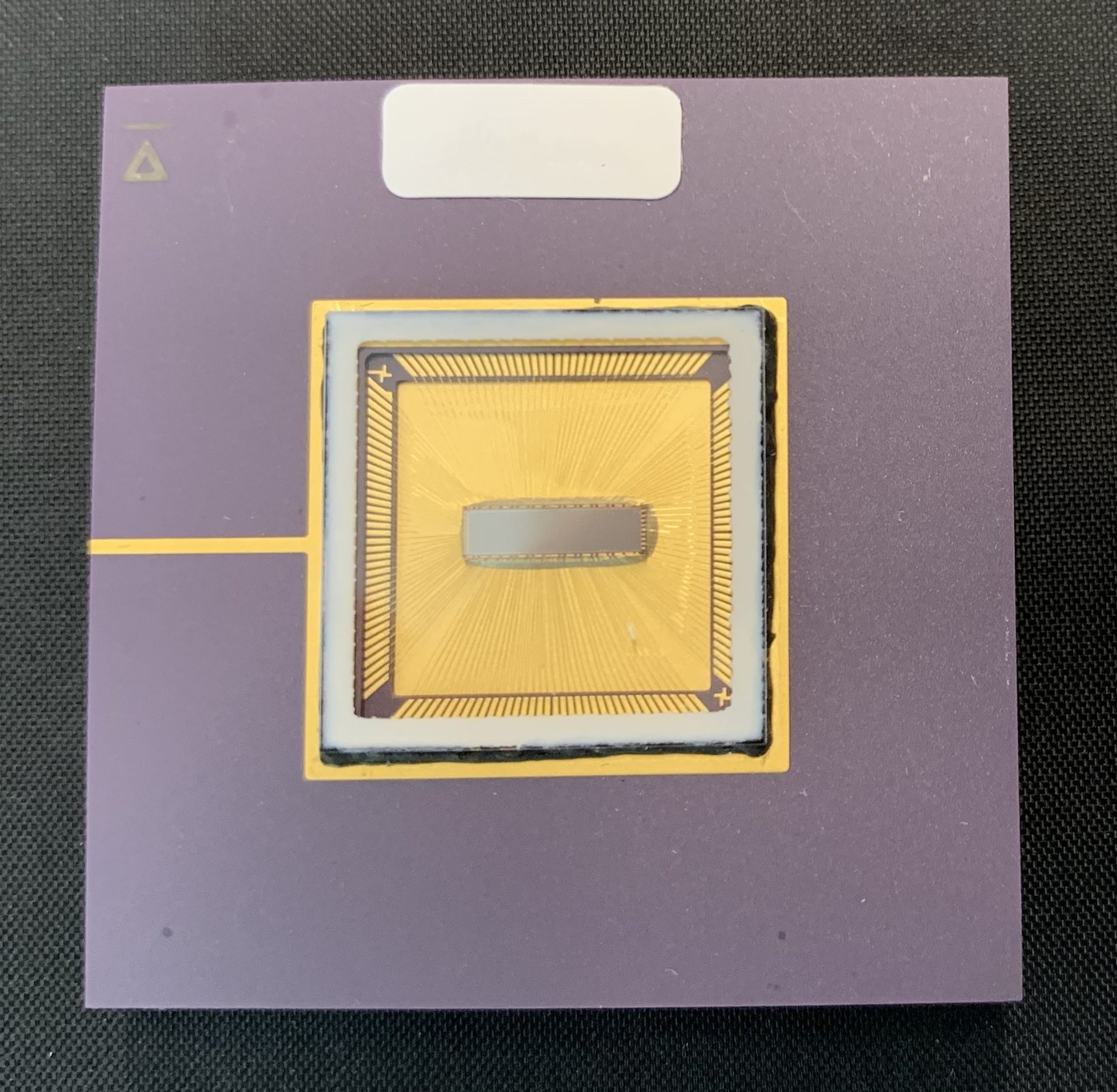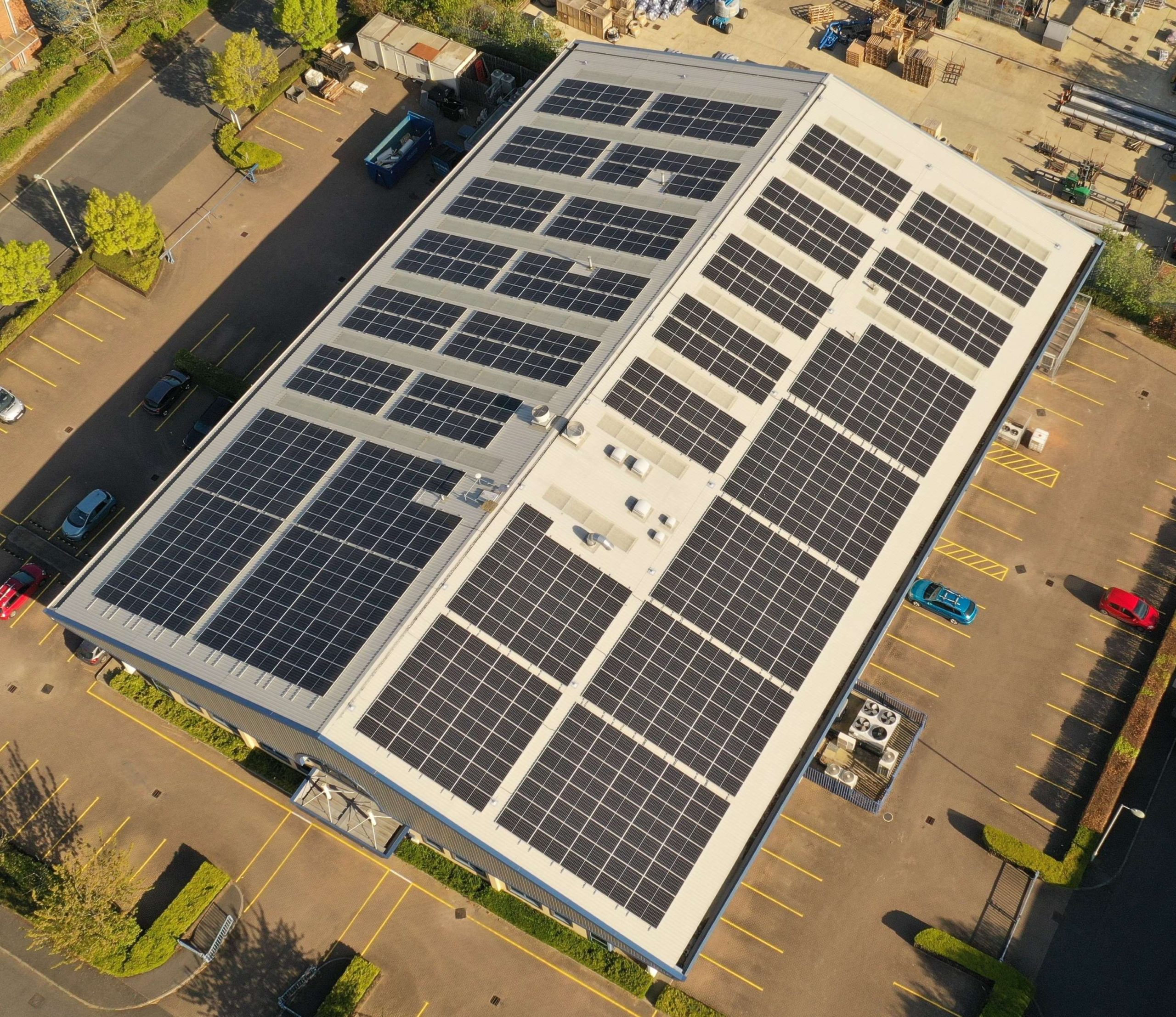A new era of ROAMing… without leaving the office
Recent years have seen a significant uptake in remote operations. We think this trend will continue. With our Remote Offshore Access Module (ROAM) and increasing access to communications when a sea, from low earth orbit satellite constellations to cellular networks, your opportunities are wide open. Senior surveyor Cieran Ryan explains.
Over the last two years, remote working has, by necessity, become something of an everyday occurrence. But while many are now heading back into the office, not everyone will go back to working offshore. Using today’s communications infrastructure – satellite communications and cellular networks – we can monitor and operate systems at remote sites. We think this is a trend that will only grow, for a number of reasons.
It’s not entirely new, for a start. Being able to conduct or support operations from “the beach” was something many working offshore, including those in science and defence, had been exploring for some time. Remote operations reduces risk to humans and logistics requirements. The result is lower costs and greenhouse gas emissions.
Satellite communications already provide offshore wind farm technicians with connectivity to the beach and subject matter experts. As offshore wind proliferates and moves further offshore, use of satellite communications and locally based wind farm wireless communications networks will also aid future use of robotics. That could be uncrewed vessels, aerial drones or robot crawlers that inspect blades. The emergence of low earth orbit (LEO) satellite networks providing high-speed satellite broadband with low latency data transfer will only further support this trend.
Remote operations support
Here at Sonardyne, we’ve embraced remote operations support. As I write, multiple operational vessels are requesting our Technology Services team’s support at locations all around the world, from the Black Sea to offshore Brazil and the North Sea. This for anything from overseeing the calibration of LBL arrays using the standard Least Squares techniques or the calibration of Sparse LBL arrays that combines the use of the SPRINT-Nav and Compatt ranges to SLAM (simultaneous localisation and mapping) calibrate the arrays. It could just be having our experts on hand to de-risk a particularly critical subsea construction project.
Remote Offshore Access Module – ROAM
Our remote services are provided through our Remote Offshore Access Module (ROAM) box. It’s a small box – similar to the size of a child’s lunch box – that contains everything needed to create secure connections from the Technology Service here team at Sonardyne to the vessels that need our support. That includes a secure VPN, giving the user piece of mind that their Sonardyne system is only being accessed by us and that it is a secure connection. The ROAM boxes are controlled from a cloud-based server that allows us to keep track of what is happening online and when support might be required.
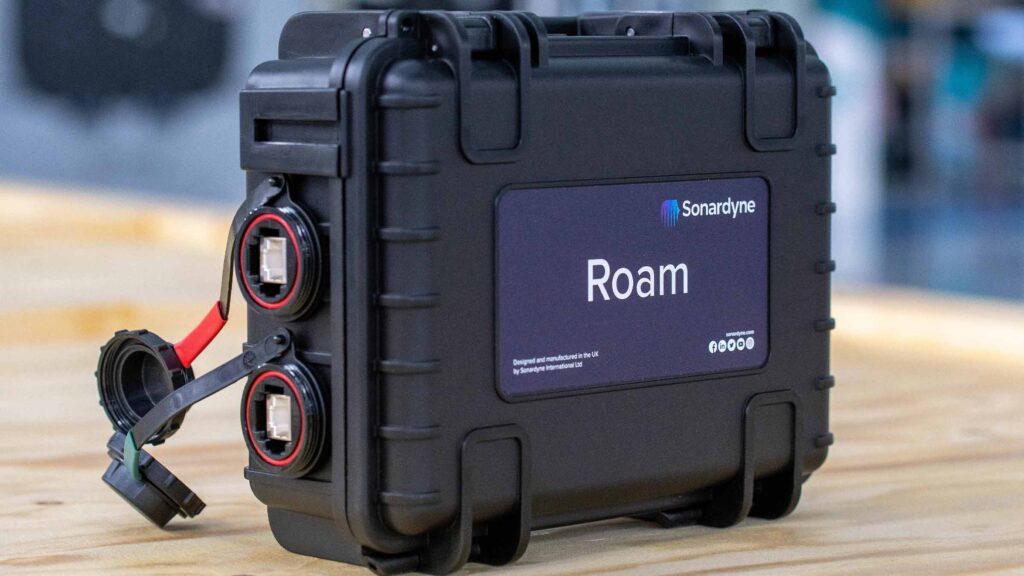
It’s a great way to reduce your persons on board numbers, cost and logistics, which also makes it an environmentally friendly solution. With a decent internet connection, surveyors onboard any vessel with a ROAM box connected have the peace of mind knowing that a Sonardyne specialist can dial in to their Fusion 2 system for support, should the need arise. We’ve found this to be particularly helpful to customers on either very complex projects, when they have new staff onboard or when they want to de-risk a project.
Getting connected for remote operations
But we all know what internet connections can be like. Not all vessels have good connection or even connection at all. Those that do can suffer from limited bandwidth and speed especially in rough conditions.
With the introduction of the likes of OneWeb, Starlink and other LEO satellite constellations, this technical restriction is set to become a thing of the past (with 100-125Mb/s speeds and 70ms latency). Unlike geostationary satellites, which sit around 35,000 km above the earth, LEO constellations contain a greater number of satellites that orbit much closer to the earth, at about 550 km in the case of Starlink. That means satellite broadband capability with lower latency than geostationary satellites.
Satellite or cellular
But while we wait for these systems to roll out, we don’t have to wait to continue to increase how much we do remotely today. As well as being able to use satellite services, ROAM also contains a SIM card. So, ROAM can also use cellular networks, which are easy to access inshore and are now available in large swathes of the North Sea and the Gulf of Mexico. We are also working on low bandwidth communications, which will improve speed and connection stability, even when we eventually get our data from LEO constellations.
A future augmented vision for remote operations
When LEO constellations become available, greater speeds and reliability will increase the access that we can be granted and level of support that we can offer. Looking a little further into the future, that could also take us into the augmented reality spectrum, as well as basic computer control.
LEO constellations offer other advantages, such as greater opportunities for near-real-time data processing and quality control on faster cloud-based systems. In turn, this could eventually help to reduce the total number of front-line operational staff required offshore. With ROAM, we can also keep developers in the loop as they can observe real time operations and fix any abnormalities should they occur.
So, the future is in fact now. Remote operations are now fully established and with new communications routes opening up like LEO constellations they will be even easier to access.
If you’d like to learn more or find out how we can support your operations, remotely, get in touch.
Want to find out more about this article?
Speak to an expert





